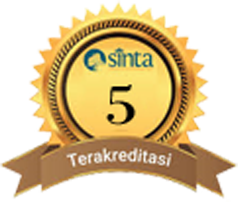MODEL INTEGRASI SISTEM PENDIDIKAN DAYAH SALAFIYAH
DOI:
https://doi.org/10.22373/fitrah.v4i2.2178Keywords:
Integration, Dayah Education, School, MadrasahAbstract
Dayah salafiyah today has adopted a lot of national education systems, with their own systems and models. The idea of the Islamic Islamic boarding school integration model through the existence of schools and madrasas is the focus of this research. The subjects of the dayah that were chosen were the Darusa'adah Teupin Raya dayah, which has a high school; Dayah Jeumala Amal, which has a madrasah system, and dayah Ummul Ayman, which has a vocational-based school (SMK). The focus of the problem is, what is the form of integration of the Islamic boarding school education system through schools and madrasas? This research is called qualitative research. The author collects data through observation, interviews, and documentation studies at the three Islamic boarding schools. Data analysis consists of; data reduction, data presentation, and conclusion drawing. The results showed that the forms of integration of the Islamic education system through SMA in Dayah Darussa'adah were scientific integration, informal integration of curriculum, and integration of akhlakul karimah values. The form of integration of dayah education through Dayah Jeumala Amal is integration of scientific correlation, extracurricular integration, and integral-formal, and holistic integration. As for the integration of Dayah Ummul Ayman 3 education with Vocational High School, namely correlation-informal integration, and integration of religion with entrepreneurship.
References
Azyumardi Azra, Pendidikan Islam Tradisi dan Modernisasi di Tengah Tantangan Millenium III, Jakarta:Logos Wacana Ilmu, 1999
Departemen Agama Negeri RI, Grand Design Pendidikan Keagamaan dan Pondok Pesantren 2004 – 2009
Ismail al-Faruqi, Islamization of Knowledge: General Principal and Workplan, Washington DC, International Institute of Islamic Thought, 1982
Ismail Raji al-Faruqi, Islamization of Knowledge, Virginia: International Institute of Islamic Thought, 1989
Kamus Besar Bahasa Indonesia, Balai Pustaka, 2007
M. Armia Ali, Profil Darussa’adah, Yayasan Pendidikan Islam (YPI), Darussa’adah Pusat, Teupin Raya, Pidie, t.t
M. Zainuddin, Paradigma Pendidikan Terpadu menyiapkan generasi ulul albab, Malang: Malang Press, 2010
Matthew B.Milles dan A. Michael Huberman, Analisis Data Kualitatif: Buku Sumber tentang Metode-Metode Baru, terj. Tjejep Rohendi Rohidi, Jakarta: UI Press, 1992
Muhaimin, Arah Baru Pengembangan Pendidikan Islam, Pemberdayaan, Pengembangan kurikulum, hingga Redifinisi Islamisasi Pengetahuan, Bandung : Nuansa, 2003
Nurcholish Madjid, Bilik-Bilik Pesantren: Sebuah Potret Perjalanan, Jakarta, Paramadina, 1997
Robin Fogarty, How to Integrate the Curricula, USA: Corwin A Sage Companym 2009
Syed Muhammad Naquib al-Attas, Islam and Secularism, Kuala Lumpur: ISTAC, 1993
Syed Muhammad Naquib alAttas, Aims and Objectives of Islamic Education, London: Hodder & Stouhton, 1979
Tim LSAMA, 30 Tahun Dayah Jeumala Amal, sebuah Usaha Peningkatan Kualitas Anak Bangsa, (Pidie: Dayah Jeumala Amal & LSAMA, 2016), hlm.7-8
Trianto, Model Pembelajaran Terpadu dalam teori dan Praktik, Jakarta: Prestasi Pustaka Publisher, 2007
Usman Husein, Sejarah Pendidikan Islam, Banda Aceh: Ar-Raniry Press, 2008
Wan Mohd Nor Wan Daud, The Educational Philosophy and Practice of Syed Muhammad Naquib al-Attas, diterjemahkan oleh Hamid Fahmy dkk, Filsafat dan Praktik Pendidikan Islam Syed M. Naquib al-Attas, Bandung: Mizan, 1998
Zainal A. Baqir, integrasi Ilmu dan Agama, Bandung: Mizan Pustaka, 2010
Downloads
Published
How to Cite
Issue
Section
License
Authors who publish in this journal agree to the following terms:
- Authors retain copyright and grant the journal right of first publication with the work simultaneously licensed Attribution-NonCommercial-ShareAlike 4.0 International (CC BY-NC-SA 4.0) that allows others to share the work with an acknowledgment of the work's authorship and initial publication in this journal.
- Authors can enter into separate, additional contractual arrangements for the non-exclusive distribution of the journal's published version of the work (e.g., post it to an institutional repository or publish it in a book), with an acknowledgment of its initial publication in this journal.
- Authors are permitted and encouraged to post their work online (e.g., in institutional repositories or on their website) before and during the submission process, as it can lead to productive exchanges and earlier and greater citation of published work. (See The Effect of Open Acces)









